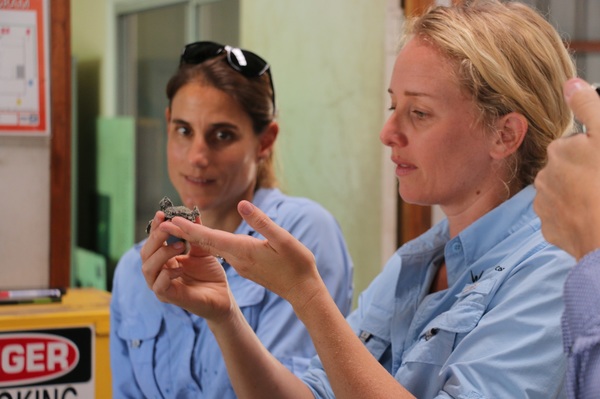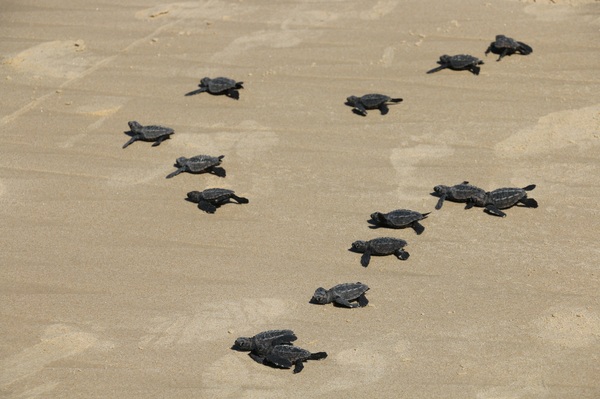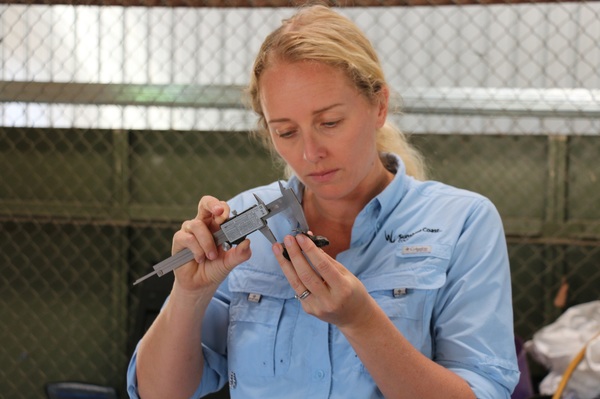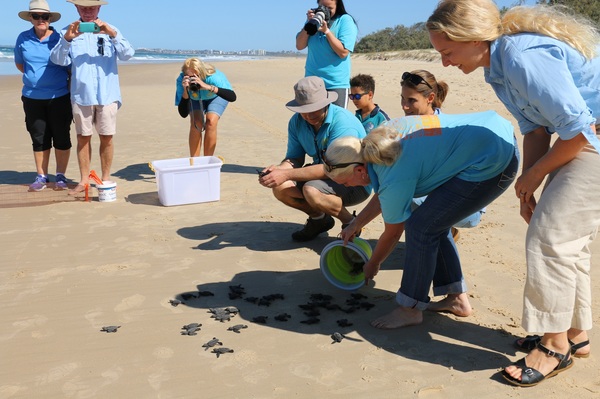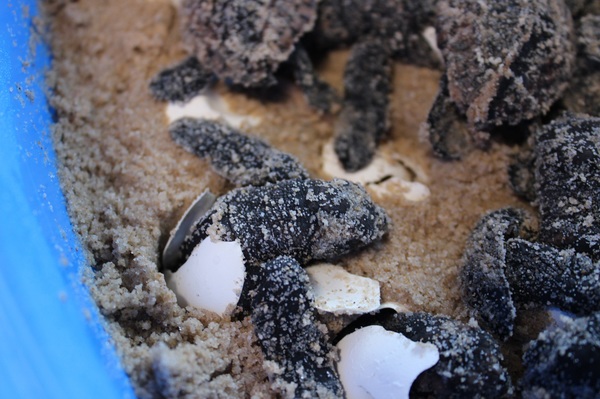A crowd of turtle lovers and curious onlookers gathered at Mudjimba beach last week to witness the momentous movement of the out-of-season, endangered Loggerhead turtles hatching.
The turtle eggs’ nest was discovered at Mudjimba Beach in late July, the first record of a winter nesting for Loggerhead turtles along the east coast of Australia.
As such, these newly hatched turtles were transported back to Mudjimba to crawl their way along the beach and begin their swimming frenzy out to sea.
During a routine evening check of the incubated winter turtle eggs on Sunday 8 August Sunshine Coast Council TurtleCare Conservation Officer Kate Hofmeister discovered that six of the previously identified 82 viable turtle eggs had pipped.
Pipping is when a hatchling cracks their shell with their egg tooth prior to fully hatching.
According to Ms Hofmeister’s council colleague, Dr Simone Bosshard, the emergence process can take three to five days for a normal nest on the beach.
“After puncturing the egg, the pipped hatchlings slowly move their head and front flippers out of the shell where they remain for about 24 hours,” Dr Bosshard said.
“During this time, they begin to straighten out the rest of their body and then start internalising the yolk sac.
“This yolk provides them with the energy to eventually dig their way out of the nest, run down to the beach and swim for two to four days without stopping for food.
“Our turtles don’t have to spend as much time digging their way out of a deep sandy nest, so we expected their emergence to be a slightly quicker process.”
By Wednesday morning, 11 September, more than 70 hatchlings were completely out of their shells. They were all at different stages of internalising their yolk sac and starting to slowly crawl around on the surface of the sand within their containers.
Council’s TurtleCare Conservation team, along with advice from Dr Col Limpus, Queensland Government’s top turtle researcher, and collaborative help from the volunteers of Coolum and North Shore Coast Care (CANSCC), determined it was time to release the first small batch of nine hatchlings out to sea that afternoon.
The next batch of 37 turtle hatchlings were released on 12 September.
Prior to the release, the team analysed a random selection of hatchlings, taking note of their length, weight, the number of scales on their shell, head, and belly, and capturing photographs of these rare and exciting marine creatures.
While the survival rates for Loggerhead turtle hatchlings is not the greatest – an estimated one out of 1,000 survive to adulthood – Ms Hofmeister is confident that these winter hatchlings have been given the best possible chance at survival.
“Had we left the eggs in their original nest on the beach, they would have all perished in the cold temperatures,” Ms Hofmeister said.
“We were advised by Dr Col Limpus to incubate the eggs at the optimum temperature of 30 degrees Celsius and ideal humidity levels, which we hoped would produce strong, fit female hatchlings.
“With this first batch of all-female hatchlings, we’re confident they have a strong chance to reach adulthood, as we’ve ensured their pathway to the ocean was clear of predators or obstructions.
“Now it’s just up to these little turtles to keep on swimming!”

